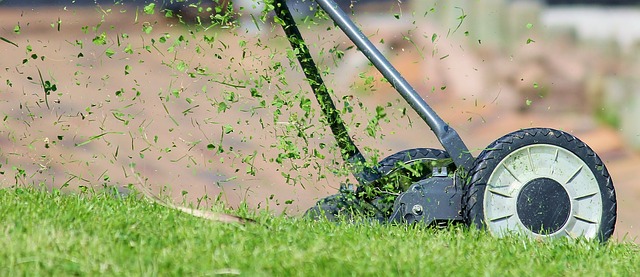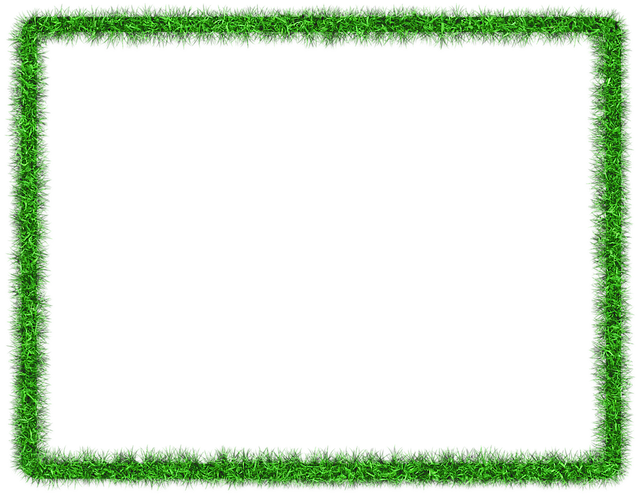prioritize a thorough assessment of your lawn's current state to inform a successful renovation. Consider soil health, drainage, and structural issues for a tailored approach. Choose grass varieties suited to your local climate and soil conditions, and evaluate your irrigation system to ensure it supports your new lawn effectively. Planning should also align with your lifestyle needs, aiming for a lawn that is both beautiful and functional, potentially serving as a habitat for wildlife. Engage with professional landscapers who can guide you through sustainable practices, soil amendments, and efficient irrigation systems tailored to your space. They can help select the right plants and turf, ensuring they thrive in your unique environment. For added outdoor living spaces, consider decking that complements your home's design and a pond for visual interest and tranquility. Design pathways that enhance the garden's flow and aesthetics, connecting different zones intuitively. A healthy lawn requires consistent care, including regular irrigation, mulching, aeration, and fertilization suited to your grass type. With these strategies, you can achieve a lush, low-maintenance lawn that adds charm and resilience to your garden year-round.
Embarking on a garden remodeling project can breathe new life into your outdoor sanctuary. This comprehensive guide will navigate you through each step of transforming your lawn from its current state to a vibrant, inviting oasis. We’ll start by evaluating your existing landscape, then move on to setting achievable goals for your desired outcome. Next, we’ll delve into selecting plants and turf that thrive in your local climate and soil type. Additionally, the integration of garden structures such as decking, ponds, and pathways will be discussed to enhance both functionality and aesthetic appeal. Finally, expert advice on landscape design and maintenance will ensure your remodeled garden remains lush and beautiful for years to come.
- Assessing Your Lawn's Current State: A Fundamental First Step
- Setting Clear Goals for Your Garden Remodel: Vision Meets Reality
- Choosing the Right Plants and Turf Varieties to Enhance Your Outdoor Space
- Integrating Garden Structures: Decking, Ponds, and Pathways That Complement Your Lawn
- Expert Tips for Landscape Design and Maintenance: Keeping Your Remodeled Garden Thriving
Assessing Your Lawn's Current State: A Fundamental First Step

Before embarking on a garden remodeling project, it’s crucial to assess your lawn’s current state. A thorough evaluation will provide a clear understanding of the work required and the resources needed to achieve your desired outcome. Begin by surveying the entire lawn for signs of distress such as patchy areas, compacted soil, or invasive weeds. Use this opportunity to identify any structural issues like uneven terrain or poor drainage that may affect the health and aesthetics of your lawn. Understanding these conditions allows you to tailor your remodeling plans effectively, ensuring that the interventions are appropriate for the specific challenges present in your garden’s environment.
In the process of evaluating your lawn, consider the existing vegetation and its suitability to the local climate and soil type. Determine whether the grass variety is well-adapted to your region or if it’s struggling due to environmental factors. This assessment will guide you in selecting the most suitable grass type for a successful lawn transformation. Additionally, evaluate the current irrigation system to ensure it can support the needs of your new lawn design and any additional plants or features you plan to incorporate into your garden remodeling project.
Setting Clear Goals for Your Garden Remodel: Vision Meets Reality

When contemplating a garden remodel, setting clear goals is paramount. Your vision for the space should align with your lifestyle and the environmental conditions of your region. For instance, if a lush, verdant lawn is at the heart of your vision, consider the local climate and soil type to ensure a healthy, sustainable turf. Factors such as sunlight exposure, water availability, and foot traffic will influence grass variety selection and maintenance routines. A well-planned lawn not only elevates the aesthetics of your garden but also provides recreational space and can even enhance biodiversity by offering a habitat for various species. Engage with specialized landscaping professionals who can translate your goals into a feasible design, incorporating elements like soil amendments, irrigation systems, and sustainable practices tailored to your lawn’s needs. This expert guidance will bridge the gap between your aspirations and the practicalities of garden remodeling, ensuring your outdoor oasis is both beautiful and resilient. In addition to visualizing the end result, prioritize functionality; a garden should serve as an extension of your home, catering to relaxation, play, or gardening activities. With careful planning and professional advice, your garden can become a multifunctional space that meets all your needs while maintaining an aesthetically pleasing appearance.
Choosing the Right Plants and Turf Varieties to Enhance Your Outdoor Space

When embarking on a garden remodeling project, selecting the appropriate plant species and turf varieties is paramount to achieving a thriving outdoor space. The right plants not only complement the existing architecture and design aesthetic but also flourish within the local climate and soil conditions. Consider the amount of sunlight your garden receives; each plant has unique light requirements, which can influence its health and growth patterns. For instance, full-sun lovers like lavender or Russian sage thrive in areas that bask in direct sunlight for six to eight hours daily, while hydrangeas and hostas prefer a shaded retreat. Similarly, choosing the right turf grass variety is crucial for maintaining a lush, green lawn throughout the seasons. Cool-season grasses, such as Kentucky bluegrass or fescue, are ideal in regions with colder climates, offering resilience against frost and shade. On the other hand, warm-season grasses like Bermuda or Zoysia are better suited for hotter, drier climates, showcasing their vibrancy during the summer months.
To ensure your garden remodeling project results in a beautiful and sustainable landscape, it’s wise to consult with local nurseries or a landscaping professional. These experts can provide personalized recommendations based on your soil type, climate, and specific goals for your lawn and plant choices. Their insights will guide you toward the best plants and turf varieties that promise to enhance both the functionality and aesthetic appeal of your outdoor space for years to come.
Integrating Garden Structures: Decking, Ponds, and Pathways That Complement Your Lawn

When considering a garden remodel, integrating structures that harmonize with your existing lawn is key to creating an outdoor space that’s both functional and aesthetically pleasing. Decking offers an excellent opportunity to expand your living area into the natural environment, providing a durable and versatile platform for relaxation or dining al fresco. Choose decking materials that complement the architectural style of your home while enhancing the garden’s ambiance, ensuring a seamless transition between indoors and out.
Incorporating a pond into your garden design can introduce a serene water feature that adds depth and tranquility to your space. The sound of flowing water from a pond can be a calming presence in your garden, attracting wildlife and creating a focal point that draws the eye. Position the pond strategically to accentuate your lawn’s most beautiful aspects, and consider incorporating lighting to highlight its features as daylight fades.
Pathways are essential for navigating your garden while also adding structure and interest. Design pathways that meander through your garden, leading to different zones such as seating areas, plant beds, or water features. The choice of materials for pathways should consider both practicality and visual appeal, complementing the color and texture of your lawn for a cohesive look. Well-planned pathways not only enhance the accessibility of your garden but also guide visitors to experience its various elements in a thoughtful manner.
Expert Tips for Landscape Design and Maintenance: Keeping Your Remodeled Garden Thriving

Engaging in garden remodeling offers an opportunity to transform your outdoor space into a verdant retreat. To ensure your lawn thrives post-remodel, prioritize understanding the local climate and soil conditions. Tailor your plant selection to complement these factors, ensuring a harmonious balance that requires minimal adjustments over time. Regular irrigation is key; automated systems can be installed for efficiency and consistency. Moreover, mulching around plants helps retain soil moisture, suppress weeds, and improve soil quality. Maintaining the health of your lawn involves more than just planting; it’s about creating an ecosystem where plants can flourish with minimal intervention.
Consistent maintenance practices are essential to keep your garden in top condition. Regular mowing at the right height encourages grass growth and reduces weed competition. Aerating your lawn seasonally allows air, water, and nutrients to penetrate the roots more effectively, fostering a robust root system that can better withstand environmental stressors. Fertilization should be strategic, using the appropriate type for your grass variety and timing it with growth patterns to optimize uptake. By adhering to these principles, you’ll cultivate a resilient landscape design that requires less upkeep and continues to impress throughout all seasons.
In conclusion, embarking on a garden remodeling project can transform your outdoor space into a verdant haven. By meticulously assessing your lawn’s current state and setting clear goals for your desired outcome, you lay the groundwork for a successful renovation. Selecting appropriate plants and turf varieties tailored to your region and lifestyle ensures both aesthetic appeal and ease of maintenance. Furthermore, integrating garden structures like decking, ponds, and pathways not only enhances functionality but also complements the overall design. Expert landscape design and maintenance tips are crucial for maintaining the vitality of your remodeled garden. With careful planning and professional advice, your lawn can be a source of pride and a tranquil retreat from daily life.
